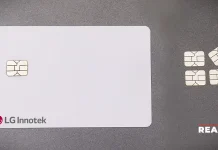The LoRa Alliance®, the global association of companies backing the open LoRaWAN® standard for the internet of things (IoT) low-power wide-area networks (LPWANs), announced that LoRaWAN was officially approved as a standard by the International Telecommunication Union (ITU), the United Nations specialized agency for information and communication technologies (ICTs).
The standard is titled Recommendation ITU-T Y.4480 “Low power protocol for wide area wireless networks” and is under the responsibility of Study Group 20 of the ITU Telecommunication Standardization Sector (ITU-T), ITU’s standardization expert group for “Internet of Things and smart cities and communities.”
“LoRaWAN was developed as an open standard from the very beginning, which was recognized by the LPWAN community and demonstrated by its rapid global adoption as the LPWAN for IoT,” said Donna Moore, CEO and Chairwoman of the LoRa Alliance. “We undertook this endeavor with ITU-T to have LoRaWAN formally documented as an international standard by an independent authority because of our commitment to openness and standardization–which are critical to achieving the interoperability needed for massive scaling. The transposition as an ITU-T Recommendation validates the market’s decision to adopt LoRaWAN as an internationally recognized standard and sets the stage for even more growth.”
“I would like to applaud ITU members and the LoRa Alliance for their work together in paving the way for this significant agreement,” said Bilel Jamoussi, Chief of Study Groups for the ITU Telecommunication Standardization Bureau. “Collaboration among standardization communities continues to grow in importance alongside the accelerating digital transformation underway across our economies.
The LoRa Alliance has been engaged with ITU throughout much of 2021 to complete its qualification process. The Study Groups of ITU-T assemble experts from around the world to develop international standards, known as ITU-T Recommendations, which act as defining elements in the global infrastructure of ICTs.




